"I commend to you our sister Phoebe, a servant of the church at Cenchreae, that you may welcome her in the Lord in a way worthy of the saints, and help her in whatever she may need from you, for she has been a patron of many and of myself as well." Romans 16:1-2
The word translated as servant in the verse above is the Greek word
diakonos, from which is derived deacon and deaconess. The Apostle Paul refers to himself and Timothy as "deacons" or servants of Jesus Christ in Philippians 1:11. However, Acts 6 records the establishment of the diaconate as a special ministry of service within the Church, distinct from the pastoral ministry and intended to allow the apostles to concentrate on preaching and prayer. Stephen, the first Christian martyr, was a deacon. The requirements to serve in this ministry are described in Paul's first letter to Timothy, chapter 3.
Romans 16:1-2 is regarded as evidence that women served in this ministry in the early Church. In addition to this Scriptural reference, Christian deaconesses are mentioned by Pliny the Younger in a early second-century letter to the Roman Emperor Trajan.
The office of deaconess was formally recognized at the Council of Nicea in 325 A.D. The responsibilities of deaconesses in the post-apostolic to medieval periods included assisting in the baptism of adult women, leading prayer services for women, instruction of catechumens, caring for the sick, and, in some areas, administering the sacrament of Holy Communion to women who were ill, to nuns, and to young children when a pastor was not available.
The female diakonate had gradually disappeared as a distinct ministry within Western Christendom by the 6th Century and within the Eastern Orthodox Church by the 11th Century. However, interest was renewed as a spiritual revival and rapid social change swept Europe and the United States in the 19th Century, prompting women to seek ways of dedicating themselves to the Lord's service. Theodor Fliedner and his wife, Friedericke Munster, opened the first Lutheran deaconess motherhouse in Kaiserwerth on the Rhine in 1836. Fifty years later, there were over 5,000 deaconesses in Europe.
Within the Lutheran Church - Missouri Synod, deaconesses have served in a variety of roles since the 1830s. In 1919, the
Lutheran Deaconess Association was formed and assumed responsibility for the formation of deaconesses wishing to serve in the Lutheran Church—Missouri Synod. Deaconesses were trained at the Lutheran Hospital in Fort Wayne, Indiana, where they received training as nurses. Later, in 1943, the program moved
to
Valparaiso University.
As time went on, the training of deaconesses evolved and deaconesses no longer needed to be trained as nurses or social workers. Those wanting to serve in parish settings were trained in spiritual care and were educated in the scriptures and the Lutheran Confessions, so they could teach and assist the pastors by providing both spiritual and human care to those in need. Both LCMS seminaries (
Concordia Seminary, St. Louis, and
Concordia Theological Seminary, Fort Wayne) offer a master’s degree-level deaconess track for women with undergraduate "pre-deaconess" courses offered at universities within the LCMS "Concordia" system.
So why am I telling you this? Because the Lutheran Church of Venezuela has a similar training program for deaconesses. In fact, it is the largest deaconess program of any of the LCMS partner-churches in Latin America. Currently there are 65 women studying to be deaconesses through extension courses offered by the Juan de Frias Theological Institute and nine Venezuelan women actively serving as deaconesses. Much of the rapid development of this program is due to the work of Fort Wayne deaconess-missionaries Mireya Johnson and Rosie Gilbert, who although no longer serving in Venezuela, remain consultants to the program.
The two most highly trained deaconesses within the Lutheran Church of Venezuela are my wife, Luz Maria, and her friend from Caracas, Elsy de Machada. In fact, since these two have completed all of the four levels of theological education by extension offered by the Juan de Frias Theological Institute, there is no one here with a higher level of theological education than Luz Maria and Elsy.
Luz Maria is actively serving as a deaconess through her involvement with our preschool and mission project in La Caramuca. Elsy, a member of La Paz Lutheran Church, Caracas, is involved with Katerina Lutero (Katherine Luther) Preschool.

Because of their qualifications, Luz Maria and Elsy have been named coordinators of the deaconess program in Venezuela. They met February 27 with Olga Groh, director of deaconess programs in Latin America for LCMS World Missions. Olga is the wife of Dr. Jorge Groh, Latin America region director for LCMS World Missions. The meeting went very well and Mrs. Groh was favorably impressed with the work that has been done in Venezuela.
Afterward Luz Maria returned to Barinas, but I and the other men studying in Caracas traveled with the Grohs to
Colonia Tovar, an ethnic German community in the mountains north of the city. The Grohs are natives of Argentina and descendants of German-Russians who settled there.
Colonia Tovar was founded in 1843. Agustin Codazzi, an Italian explorer, geographer and close friend of Simon Bolivar, raised the money to transplant farmers from the
Black Forest in Venezuela. The idea was that the highly efficient family-farming practices of the Germans would greatly improve Venezuela's agricultural economy. Unfortunately the plan did not work as intended because the Germans made themselves at home in a remote valley and did not mix with the general population.
For more than 100 years, Colonia Tovar's only connection with the outside world was a steep, rugged dirt road up into the mountains. Because of the Germans' farming expertise, their community remained largely self-sufficient during this time, and because of their isolation, their German language and culture was preserved.

Then in the 1970s, a blacktop highway was built from Caracas to Colonia Tovar and the community has become a tourist attraction. In Colonia Tovar today, you can enjoy a plate of German sausage and potato salad in an outdoor restaurant while "oompa oompa" music plays in the background. We talked to a young woman running a strudel stand. She had natural blonde hair and blue eyes, both extremely rare in Venezuela. Her parents could speak German, she said, but the only language she knew was Spanish. The old ways are gradually disappearing despite the incentive of the tourist trade.

The Roman Catholic Church of St. Martin of Tours remains at the center of Colonia Tovar. The street leading to the church actually is a "via crucis", with the stations of the Cross at various points along the way. The town cemetery is up on a hill with every grave facing toward the church visible below. The church has a large parish school attached, something you do not often see in Venezuela.
I could not help but think of the last time I was in a similar setting, especially when I saw a sign for a travel agency called "Regenwald Tours". In contemporary German, "regenwald" means "rainforest", but many years ago it was the name of the village on the Rega River where my great-great-grandfather was born (in other words, "the wood by the Rega River"). My ancestors on my father's side lived in Pomerania, which lies along the southern coast of the Baltic Sea. It was once the home of Goths (with a capital "G"), then Slavs, then Germans, and was ruled at various times by the kings of Denmark, Sweden, Germany and Poland. Today Germany claims Pomerania west of the Oder River while the territory east of the Oder, including the Rega River, is considered part of Poland. The largest city, once known as Danzig, is now called Gdansk.
In the early 1800s, Pomerania was part of the Kingdom of Prussia. It was the will of the King Frederick Wilhelm III that all the Protestant churches in his realm merge into one state-controlled church. My ancestors were among the "Old Lutherans", who remained faithful to the Lutheran Confessions and refused fellowship not based on doctrinal unity. As their resistance grew, the king stepped up persecution of the Old Lutherans, confiscating their property and sending soldiers to hunt down people worshipping in the traditional Lutheran way on Sunday mornings, and carry them off to prison. (There were populations of Roman Catholics, Jews and Mennonites within Prussia at this time and the king had set up agencies to control their affairs. However, these groups were apparently not large enough to worry the king. It was the Lutherans who really put the bee in his bonnet.)
The persecution resulted in thousands fleeing to the United States of America. My great-great-grandparents eventually became part of a group that settled on the western shore of Lake Michigan and named their community Freistadt. (The geography of eastern Wisconsin is similar to that of Pomerania with Lake Michigan substituting for the Baltic Sea.) Their leader was Heinrich von Rohr, who had served with distinction as a captain in the Prussian army. He was of noble blood, with a pedigree that reached back to German knights of the Crusades. But von Rohr had been stripped of his rank and medals for having his firstborn child baptized by a Lutheran pastor rather than a minister of the king's state church. In time the former Captain von Rohr became Pastor von Rohr, and the church my great-great-grandparents helped found,
Trinity Lutheran Church of Freistadt, remains the oldest existing Lutheran congregation in Wisconsin.
Freistadt is now part of the Milwaukee suburb of Mequon. When I lived in the Milwaukee area, I used to go to Freistadt every July 4 when the community would have an all-day celebration of their cultural heritage and the religious freedom they have enjoyed for generations as U.S. citizens. A group called the
Pommersche Tanzdeel (roughly "Pomeranian Dance Company") would perform traditional folk dances with the women dressed in cone-shaped hats and flowing gowns, and the men in the tunics and pantaloons typical of Pomerania in the 1800s.
The Independence Day festivities would culminate with the raising of the U.S. flag in the the town square and a 21-gun salute by local members of the VFW and American Legion.
In 1989 I attended Trinity-Freistadt's 150th anniversary (founded in 1839, the congregation has been part of the Lutheran Church - Missouri Synod since 1848). There was a large wall completely covered with photos of the children of the congregation who had become LCMS pastors and teachers. Among them I found a picture of my great-grandfather, Louis Ernst, who left Wisconsin to become the pastor of congregations in Iowa, Texas and Nebraska.
The point of this digression being, that although the language and customs of my great-great-grandparents are, like the language and customs of Venezuela, foreign to me, I am grateful that previous generations of my family were able to pass on the most precious part of our heritage, a common confession of faith. Also it is clear, as I study the Lutheran Confessions in yet another language, that the enemies of truth and freedom are always with us, and if one is not willing to suffer all, even death, for what one believes to be the truth, one will not enjoy freedom for very long, either. And I give thanks to God that His Word and His Spirit abides with us always.



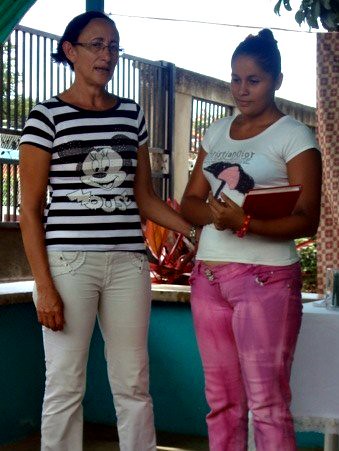


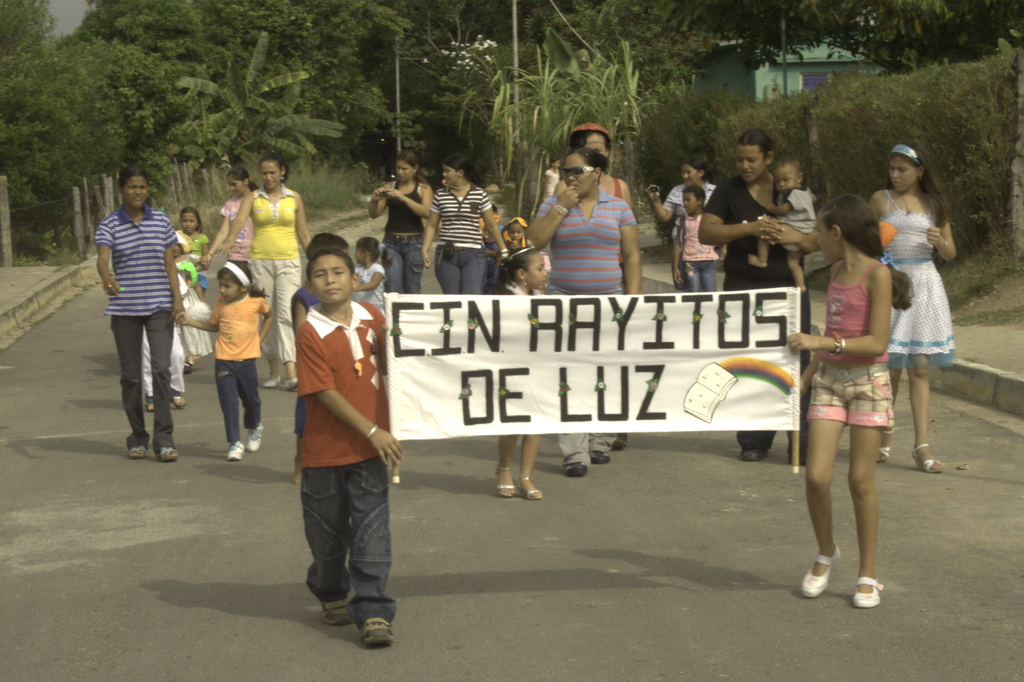
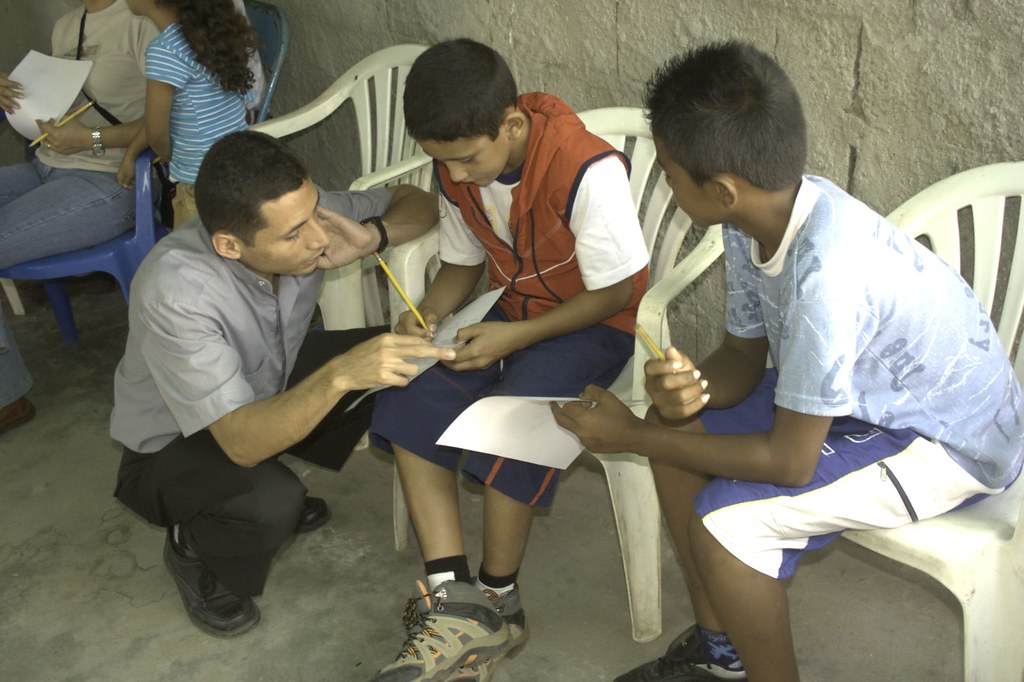


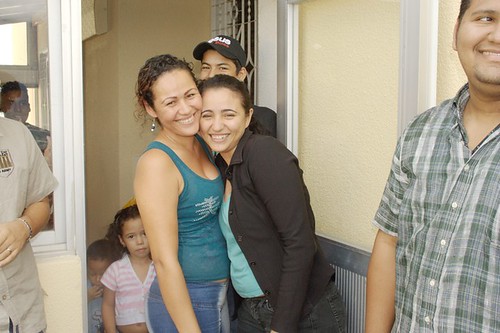 School is out now. The new school year begins in mid-September. Yepci and her children took advantage of the vacation period and spent three weeks in Caracas with Yepci's sister, Wuendy. It really was more of a working vacation as Yepci helped prepare food first for seminarians studying Greek and then for a team of volunteers from the United States who performed renovations in Quinta Lutero, the national church's office in Caracas.
School is out now. The new school year begins in mid-September. Yepci and her children took advantage of the vacation period and spent three weeks in Caracas with Yepci's sister, Wuendy. It really was more of a working vacation as Yepci helped prepare food first for seminarians studying Greek and then for a team of volunteers from the United States who performed renovations in Quinta Lutero, the national church's office in Caracas.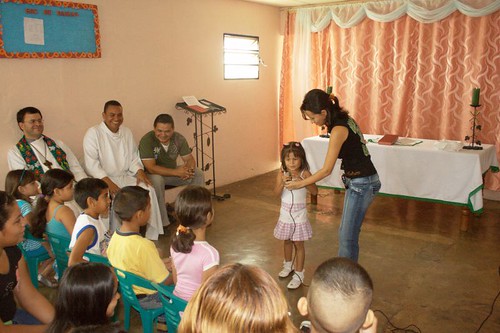 Yepci and her children, Aaron, Oriana and Elias, were back in time for vacation Bible school at Corpus Christi Lutheran Church in Barinas, August 22 to 25. The VBS was based on the story of Noah's Ark and how, as Noah and his family passed through the waters of the Great Flood, we pass through the waters of baptism to salvation. Attendance peaked at around 50 children. Many of them attended the Sunday service at Corpus Christi with their parents (a number of whom were not members) to explain what they had learned.
Yepci and her children, Aaron, Oriana and Elias, were back in time for vacation Bible school at Corpus Christi Lutheran Church in Barinas, August 22 to 25. The VBS was based on the story of Noah's Ark and how, as Noah and his family passed through the waters of the Great Flood, we pass through the waters of baptism to salvation. Attendance peaked at around 50 children. Many of them attended the Sunday service at Corpus Christi with their parents (a number of whom were not members) to explain what they had learned.

